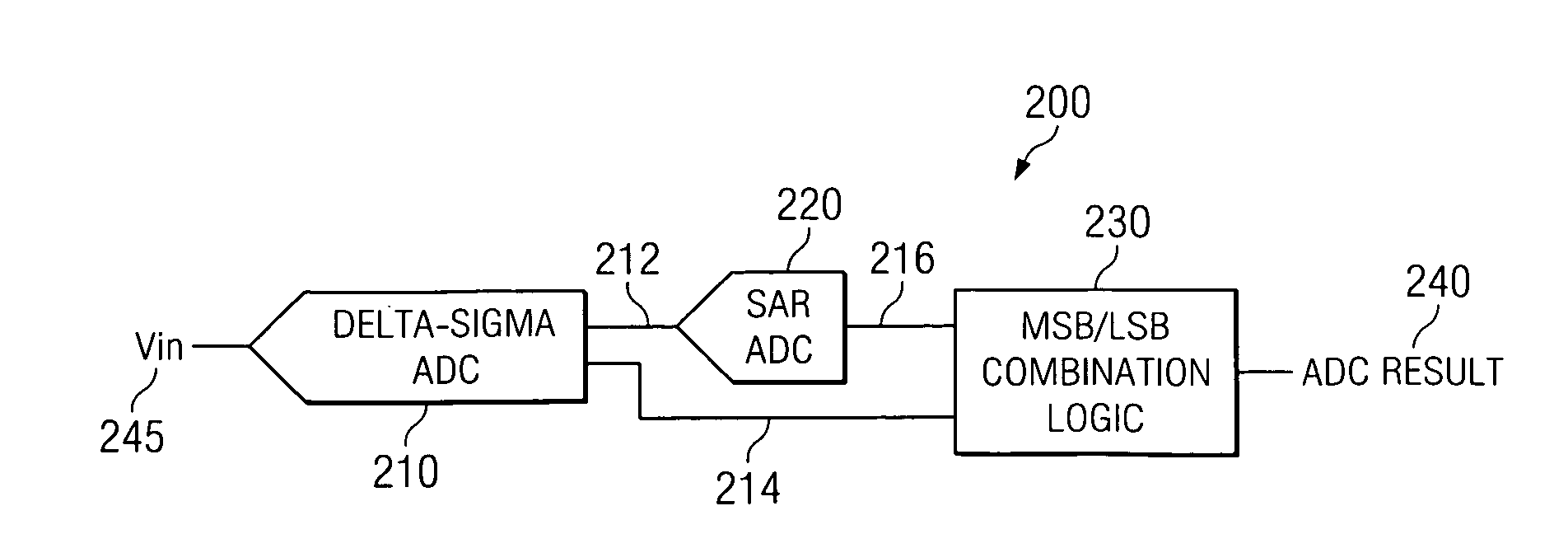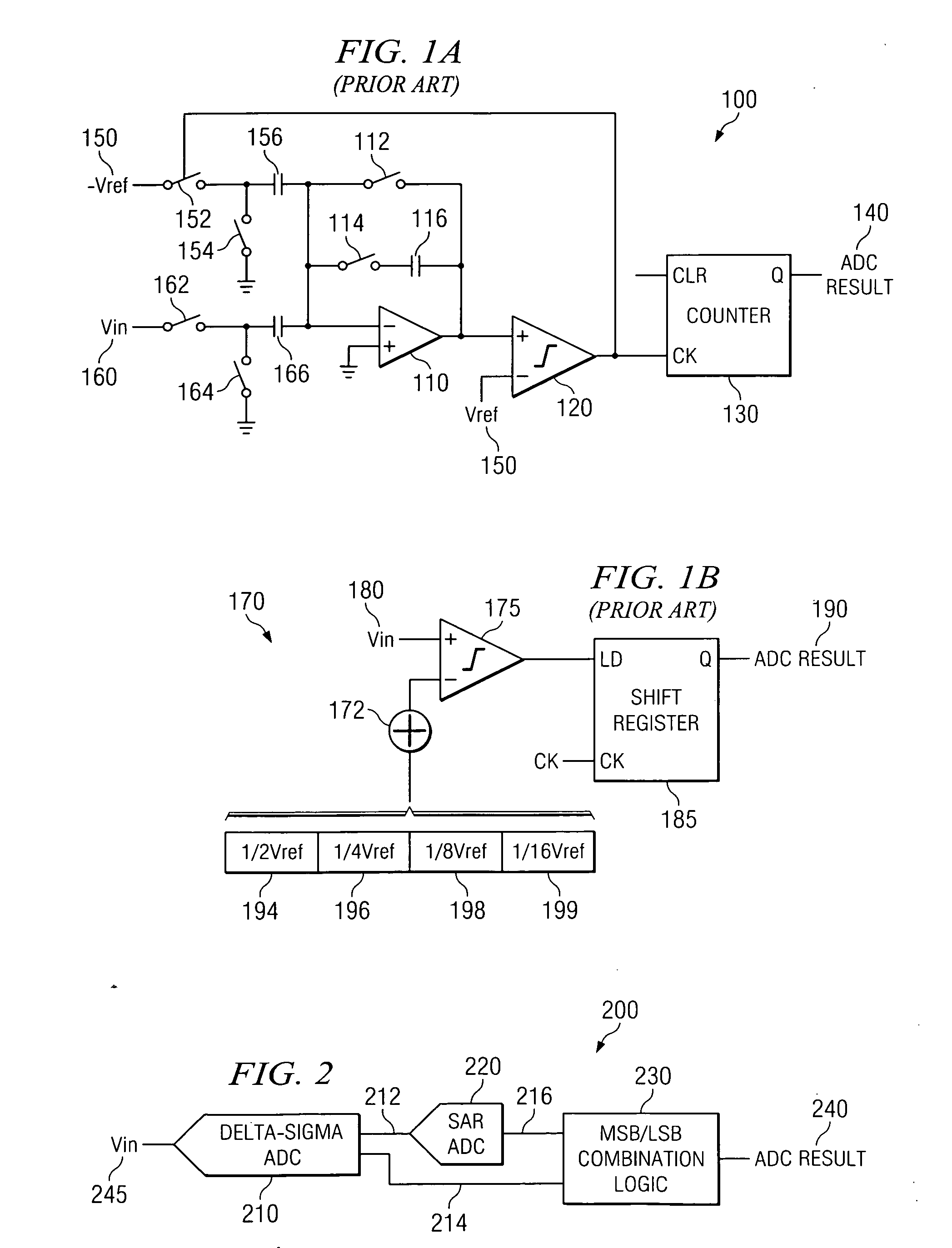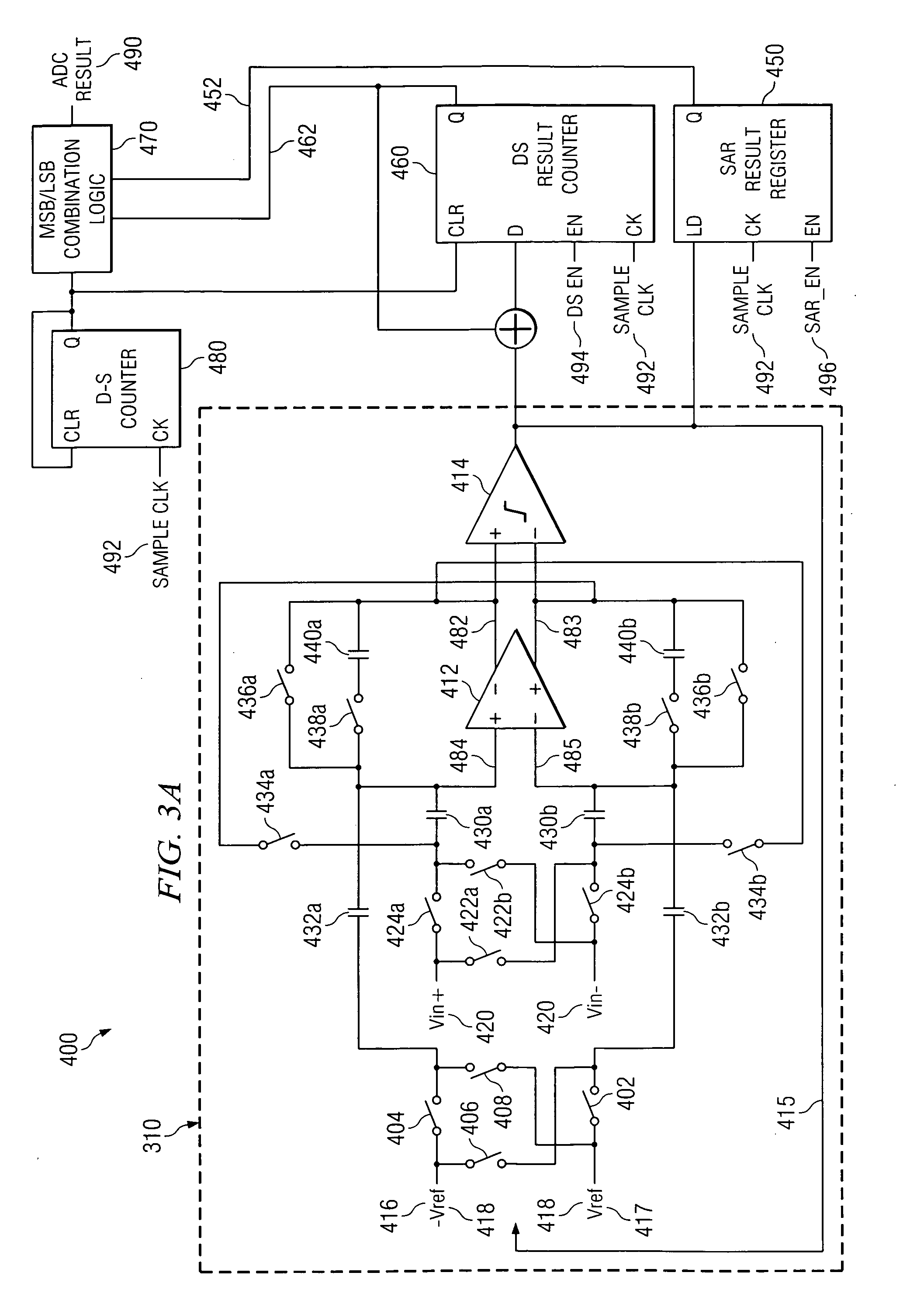Integrating/SAR ADC and method with low integrator swing and low complexity
a technology of integrator swing and integrator, applied in the field of hybrid deltasigma/sar analog to digital converter, can solve the problems of increasing exponentially the number of samples (n) to create a defined output resolution of adc result b>140/b>, and requiring substantial conversion time for relatively high resolution
- Summary
- Abstract
- Description
- Claims
- Application Information
AI Technical Summary
Benefits of technology
Problems solved by technology
Method used
Image
Examples
Embodiment Construction
[0044]Referring to FIG. 2, a combined delta-sigma and SAR (i.e., “Successive Approximation Register”) based analog to digital converter (ADC) 200 in accordance with various embodiments of the present invention is depicted. Analog to digital converter 200 includes a first stage delta-sigma analog to digital converter 210, a second stage SAR analog to digital converter 220, and a combination block 230. Delta-sigma analog to digital converter 210 receives a voltage input 245 that is to be sampled. Delta-sigma analog to digital converter 210 performs a delta-sigma based analog to digital conversion that provides a first portion of a conversion result 214 and a conversion residue 212. The first portion of the conversion result 214 and conversion residue 212 are formed using delta-sigma conversion techniques that are more fully discussed below in relation to FIG. 3B. Further, it should be noted that delta-sigma analog to digital converter 210 may be implemented as any of a variety of circ...
PUM
 Login to View More
Login to View More Abstract
Description
Claims
Application Information
 Login to View More
Login to View More - R&D
- Intellectual Property
- Life Sciences
- Materials
- Tech Scout
- Unparalleled Data Quality
- Higher Quality Content
- 60% Fewer Hallucinations
Browse by: Latest US Patents, China's latest patents, Technical Efficacy Thesaurus, Application Domain, Technology Topic, Popular Technical Reports.
© 2025 PatSnap. All rights reserved.Legal|Privacy policy|Modern Slavery Act Transparency Statement|Sitemap|About US| Contact US: help@patsnap.com



